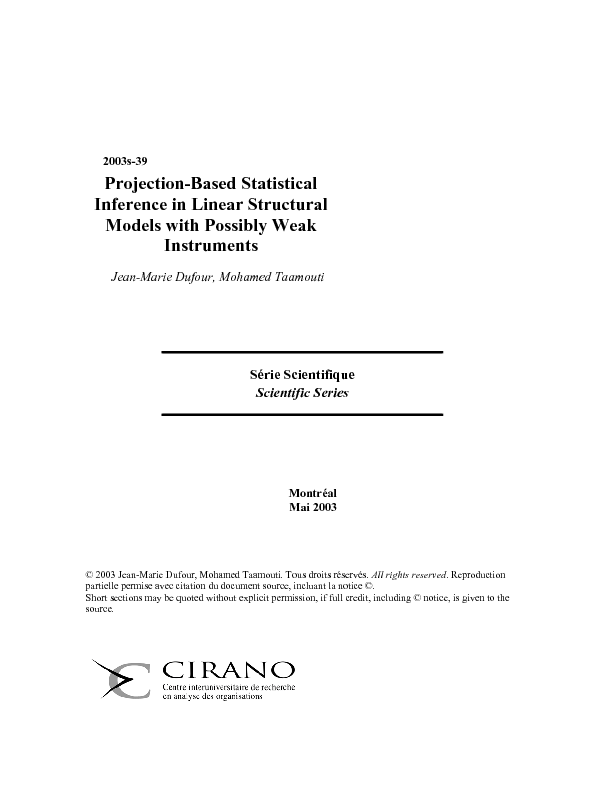Projection-Based Statistical Inference in Linear Structural Models with Possibly Weak Instruments
It is well known that standard asymptotic theory is not valid or is extremely unreliable in models with identification problems or weak instruments [Dufour (1997, Econometrica), Staiger and Stock (1997, Econometrica), Wang and Zivot (1998, Econometrica), Stock and Wright (2000, Econometrica), Dufour and Jasiak (2001, International Economic Review)]. One possible way out consists here in using a variant of the Anderson-Rubin (1949, Ann. Math. Stat.) procedure. The latter, however, allows one to build exact tests and confidence sets only for the full vector of the coefficients of the endogenous explanatory variables in a structural equation, which in general does not allow for individual coefficients. This problem may in principle be overcome by using projection techniques [Dufour (1997, Econometrica), Dufour and Jasiak (2001, International Economic Review)]. Artypes are emphasized because they are robust to both weak instruments and instrument exclusion.
However, these techniques can be implemented only by using costly numerical techniques. In this paper, we provide a complete analytic solution to the problem of building projection-based confidence sets from Anderson-Rubin-type confidence sets. The latter involves the geometric properties of "quadrics"" and can be viewed as an extension of usual confidence intervals and ellipsoids. Only least squares techniques are required for building the confidence intervals. We also study by simulation how ""conservative"" projection-based confidence sets are. Finally, we illustrate the methods proposed by applying them to three different examples: the relationship between trade and growth in a cross-section of countries, returns to education, and a study of production functions in the U.S. economy."
[ - ]
However, these techniques can be implemented only by using costly numerical techniques. In this paper, we provide a complete analytic solution to the problem of building projection-based confidence sets from Anderson-Rubin-type confidence sets. The latter involves the geometric properties of "quadrics"" and can be viewed as an extension of usual confidence intervals and ellipsoids. Only least squares techniques are required for building the confidence intervals. We also study by simulation how ""conservative"" projection-based confidence sets are. Finally, we illustrate the methods proposed by applying them to three different examples: the relationship between trade and growth in a cross-section of countries, returns to education, and a study of production functions in the U.S. economy."




